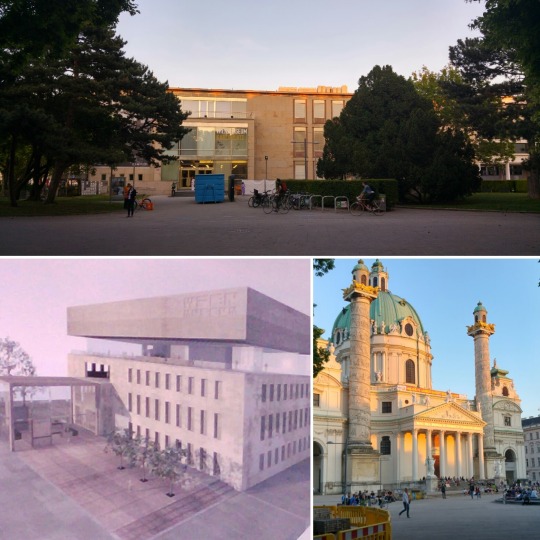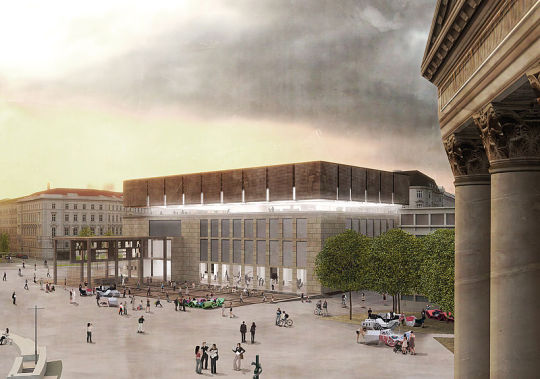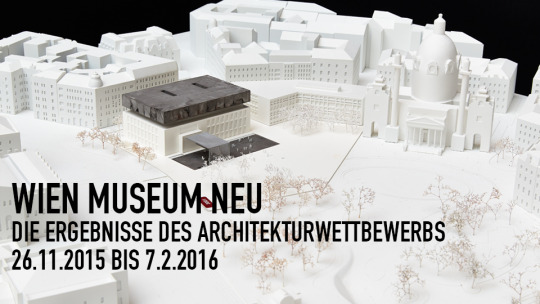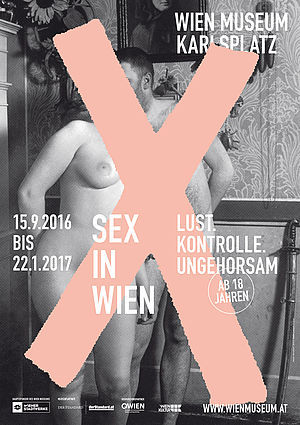#wienmuseum
TheVienna City History Museum (Wien Museum) is going to be undergoing some pretty momentous changes in the coming years, and the museum held an event last night to inform interested members of the public of the current status of the developments and offer some tantalising snippets about the direction the museum will take.
Some brief background, although the museum as an entity is 130 years old, the current building and location is a product of the 1950s, a mere 11 years after the end of WWII, the museum opened in the so-called “Haerdtl” building, a modern and innovative building that set the tone for Vienna’s post-war city planning. However, the intervening years has seen the collection and the role of the museum transform and grow, and the current museum is busting at the seams, with revenue-driving temporary exhibitions spread over several floors and a somewhat disjointed feel. The building is also no longer able to completely meet the needs of a modern museum – both technologically, but also in terms of accessibility.

The current Wien Museum (top), the plans for redevelopment (bottom left, Certov, Winkler & Ruck) and the strong competition that is the the Karlskirche next door.
The redevelopment of the museum has not been without controversy – indeed, previous events have been heated and not without the occasional conspiracy theory. This was avoided last night by hiring a friendly but determined moderator to ensure the discussion stayed on track, clearly defining the topics of the evenings discussion. The architectsCertov,Winkler & Ruck from Graz won the global competition, beating over 270 other submissions.Their vision sees the adding of two extra floors to the museum, one offering more room for events, classrooms and ateliers, a lounge area, extra office space and a terrace with views of the city and a second dedicated solely to temporary exhibitions. This top floor will be flexible, it’s possible use ranging from one large exhibition space, to five smaller exhibitions spaces and all manner of possible configurations in between.

The redevelopment will only ony add more exhibition space and events/educational facilities, but it will also reestablish the museum’s position on the square with a piazza where visitors and non-visitors alike can meet and relax. Picture: Wien Museum
The current museum was built at a time when the square in front of the museum was not a park as it is today, but a busy traffic intersection. Changes to the use and layout of Karlsplatz (named for the bombastic looking Karlskirche ‘Charles Church’) have left the museum somewhat sidelined and easily overlooked, pushed into a corner of the park and quite well-hidden behind trees and play parks. Not only will the new elements take into account the protected status of the original building by adding new floors in a complicated and exciting sounding way, but a new entrance area will shield the new “piazza” area for cafes and events in the front of the museum from the traffic of the nearby road and offer a kind of intermediate zone between the museum and the wider world. The new design will reintroduce the museum on the square, both in terms of presence and use of space.

The current Wien Museum and it’s immediate surroundings on Karlsplatz. Picture: Google Maps.
The New Permanent Exhibition
The museum’s director, Matti Bunzl (see also “A Breakfast with Matti Bunzl, The Vienna City Museum’s Director-in-waiting”), was also on hand to offer some insight into what form the new permanent exhibition might take. The most significant changes will be to the size and scope of the exhibition, increasing from 2000m2 to 3000m2 and bringing the story bang up to date by including a much more substantial look at the 20th century (the exhibition currently stops prior to WWI) and into the 21st century. The changes to the building will make the route through the exhibition more fluid than it currently is, offering visitors a chronological take on Vienna’s history as they ‘corkscrew’ up through the building.
The ground floor will begin with the archaeology of Vienna, leading through to the medieval period (the Wien Museum has several smaller museums throughout Vienna, including the Museum of the Middle Ages in the Stephansplatz tube station – review here) and potentially including a giant model of St Stephens Cathedral, the most famous building in Vienna. The next floor will also feature an outrageously sized object: the original Donnerbrunnen, a monumental fountain commissioned as the first public artwork by the City of Vienna in the 18th century. The fountain is so big that in all likelihood the museum will have to be somehow ‘built around it’, as even the new heavy-duty lift wouldn’t be able to transport it. Vienna’s story continues, including the boom period of the Gründerzeit, which saw Vienna as the capital of vast, multi-ethnic empire, but also the growing gaps between rich and poor, extensive migration from other areas of the empire and rapid technological advancements that made Vienna a vibrant, global metropolis.

The Donnerbrunnen today in Vienna’s first district. The original will be part of the Wien Museum’s new permanent exhibition. Photo: Wikimedia Commons
The third floor will continue the story through the changes, devastations and upheavals of the 20th century: the establishment of two Austrian Republics, the World Wars, Red Vienna, the Holocaust and Nazi Regime, the Cold War, Vienna and the UN, migration post-1960s and showcasing the museum’s art collection (it’s Vienna, so think Klimt and Schiele!)
What Comes Next?
To be able to realise such a wholescale redevelopment the museum will have to close for a period. Matti Bunzl also detailed some of the plans they have to continue the museum’s mission and to ensure that their key audiences remain in touch with the museums and engaged. One very exciting project was the school programme, which will see curators and educators spending a prolonged period in primary schools with the 3rd class (roughly nine years old), focusing not only on Vienna’s history, but also the work of a museum. Over a week, objects and information will be worked up into an exhibition that will then be opened at the end of the week. I would have just exploded with excitement if someone had come to my school to do this when I was nine.
Another programme is to have satellite, mobile exhibitions in slightly more unexpected places around the city.
The Wien Museum Neu project is now entering the public consultation phases and extensive exploratory drilling will be carried out in the coming weeks to head off any nasty surprises when the time comes to build.
You can read more about the project on the website:
Wien Museum Neu (only in German it seems, but lot’s of pictures)
The Wien Museum also had an exhibition that featured not only the winning design, but also the runners-up and special mentions.
Is it floorplansyou’re after?

Post link
An upcoming exhibition at the Wien Museum in Vienna will feature the only know surviving pink triangle from the Nazi period and the persecution of homosexuals.

Orginally owned by Viennese Josef Kohout (also known as Heinz Heger), the badge from his Flossenberg concentration camp uniform was donated to the USHMM in 1994 by his partner. The video above shows the object arriving at the Wien Museum and being unpackaged by the museum staff.
The exhibition, “Sex in Vienna: Desire. Control. Transgression” opens on September 15th and will run until 22nd February 2017.
A review will follow in due course, naturally!

Links:
For more information about Josef Kohout.
For the online catalogue entry at the USHMM
Information about the Sex in Vienna exhibition

